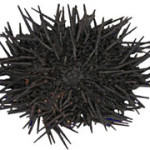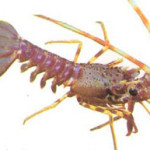
Serranidae (Epinephelus marginatus E. itajara and Mycteroperca acutirostris)
When people talk about coral reefs, fishermen tend to shrug their shoulders and complain about snagged lines and torn nets. But when you talk about groupers, they suddenly sit up and pay attention. Groupers are among the economically most important fishes of the coral reef, because of their popularity as food.
Yet without the coral reef there would probably be no groupers. For this reason, groupers are an extremely important indicator species and your record of their existence or non-existence during your dive tells us a lot. Like all indicators, it is valuable if you can record the particular species you sight. However, recording the total number of groupers is just as important. The species that we
would most like you to record are listed below for the South America – Atlantic Coast – Subtropical eco-region.
The Dusky Grouper (Epinephelus marginatus) is solitary and territorial, with a preference for rocky bottoms. It feeds on reef fishes, crabs and octopi and can grow up to 150cm. It has a sturdy, stocky body, with very rounded dorsal and ventral profiles and large head.
The Goliath Grouper (Epinephelus itajara), sometimes called the Jewfish, is classified as critically endangered on the IUCN Red List. Found in shallow, inshore waters to depths of 45m, this indicator prefers areas of rock, coral, and mud bottoms. It is also solitary and territorial and feeds on crustaceans.
As the largest member of the Sea Bass family in the Atlantic Ocean, it can reach lengths of 2.5m and weigh up to 450kg. There is anecdotal evidence of Goliaths stalking and attempting to eat divers!
The Comb Grouper (Mycteroperca acutirostris) is found on prominent rocky bottoms at 3 – 40m. There is limited information on its feeding habits, but it probably feeds on plankton. It can weigh up to 10kg, with a maximum length of 80cm. The Comb Grouper is a popular gamefish in southern Brazil for both spearfishermen and rod-and-reel anglers.








Social Profiles